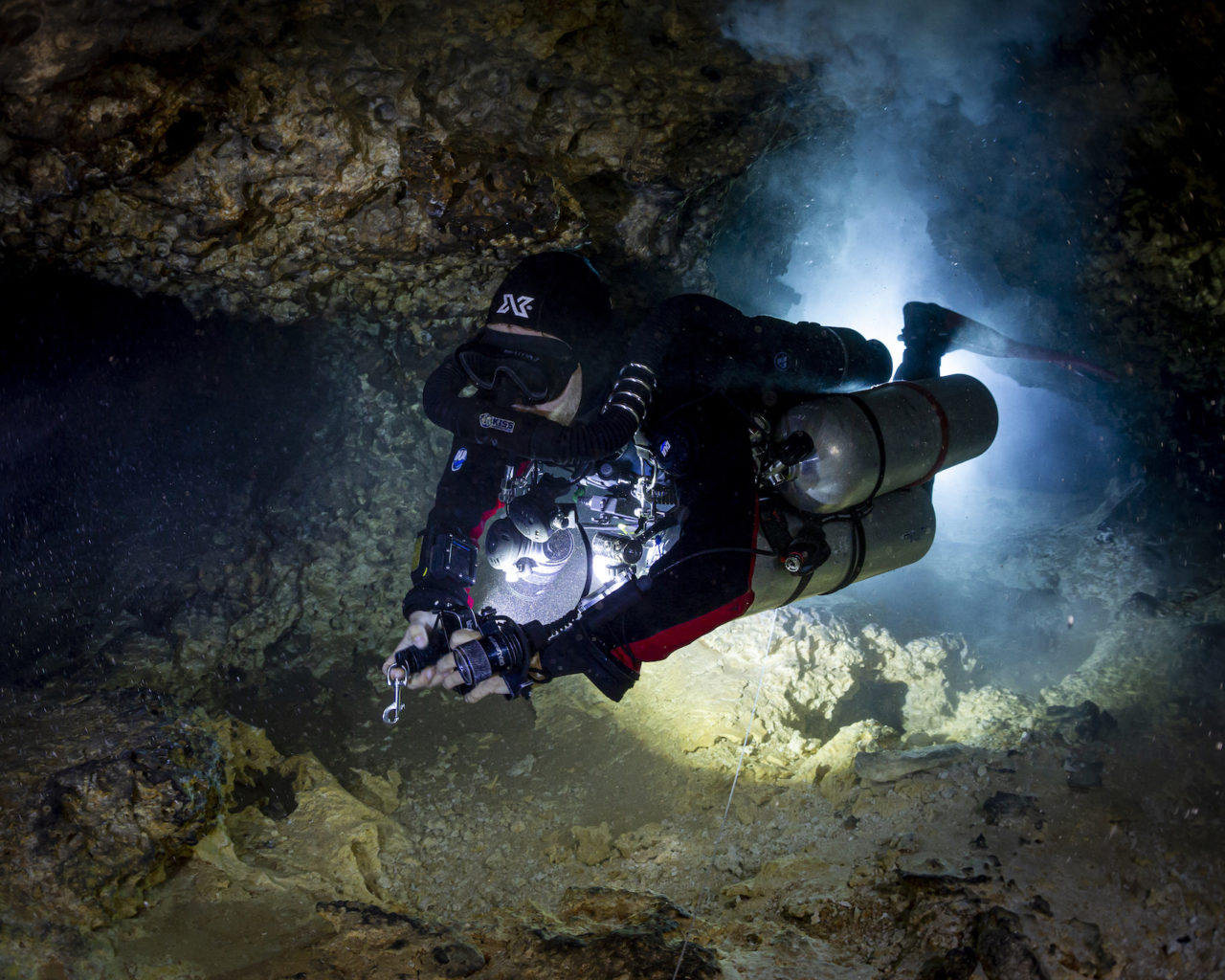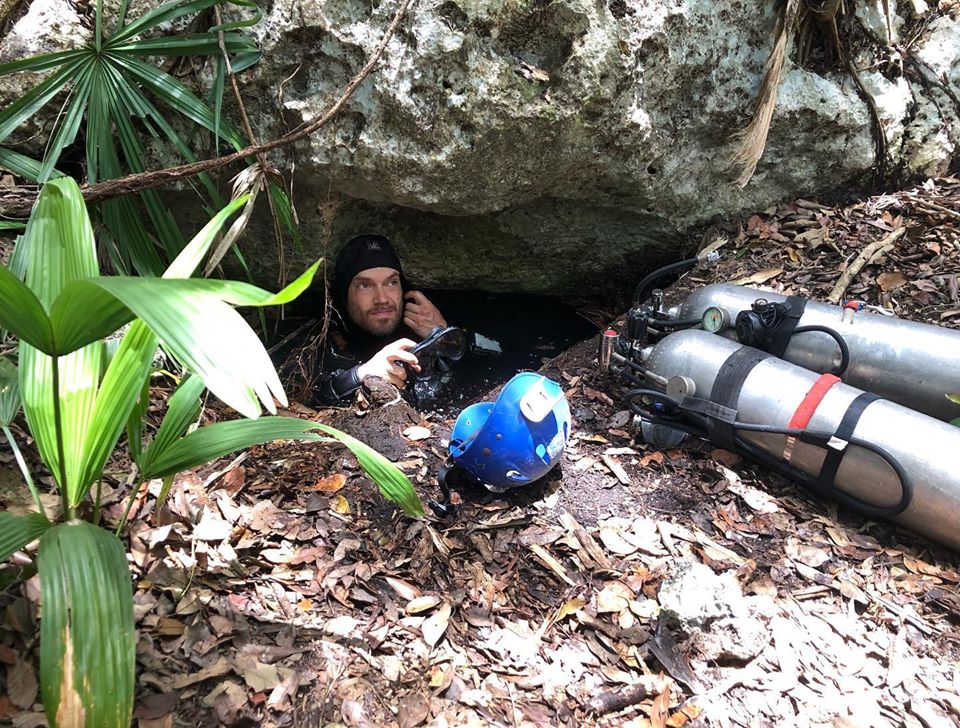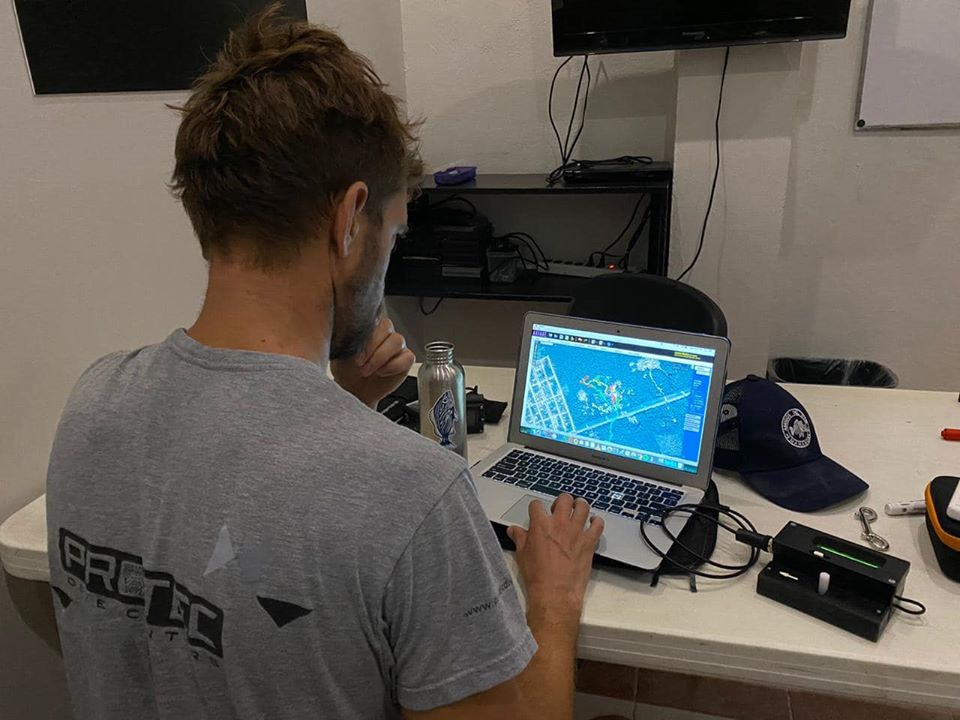While much of the world is on virus lock down here is something to keep you entertained and wet the appetite for cave diving! I’m going to tell you about some of the equipment and techniques we have been using recently for cave exploration here in Mexico. As it has gotten quite long already, this section will focus on Seacraft DPVs and the Sidewinder Closed Circuit Rebreather. Recently, in March, I tagged along for a few dives in an exploration project with the other Sidewinder divers at ProTec. There is going to be an announcement soon about the exploration and a pretty significant connection made between cave systems, so I won’t write much about that, but more about the equipment that enabled the exploration. This articIe aIso touches on exploration of a very different styIe of cave and some generalities from exploration in two other caves using the same gear.

Way back in February I joined an ongoing exploration collaboration with Phillip Lehman from the Dominican Republic Speleological Society and the Quiet Diver Team. The project has been ongoing since 2015, but due to the logistics of exploring the cave it had slowed its progress until now. The cave is pretty stunning – a shallow average depth of 6 meters / 20 feet, highly decorated. However, most of the ends of line are about 2km / 6,000 feet penetration from the entry. The cenote itself is a 45 minute hike into the mosquito filled jungle from where we can park the trucks. Up until now, exploration push dives had been double stage dives, with Diver Propulsion Vehicles (DPVs) used to move quickly and efficiently reach the areas in the cave where we are exploring. While some sections of the cave are pretty giant (wide long tunnels and huge rooms) there are multiple restrictions that require removal of any stages and even a sidemount tank. This is super annoying to have to stop and navigate through! Many of the tunnels go through very delicate, decorated sections where it is not possible to scooter, forcing divers to come off the trigger and swim carefully. The cave is beautiful but when I have to pass the same section everyday, I stop taking in the beauty and just want to get the exploration! Last year on a push dive, it took us an hour and a half just to reach the section where we wanted to explore, leaving a limited amount of gas, time (because we don’t want to have to hike out in the dark), and physical as well as mental energy for the exploration.
This time things were different. Using equipment combinations and techniques that Patrick and Phillip practiced in Madagascar we were able to do some very productive exploration dives. First of all the Seacraft DPVs have been a game-changer. Being able to change speed while driving is incredible! Now rather than come off the trigger completely we can power down to lower speeds to negotiate the smaller sections of the cave before increasing speed in bigger tunnels. While it may not sound a huge change, you definitely feel the difference and even scootering at slow speeds is more efficient than swimming. This means we have been able to reach far sections of the cave sooner, cutting our overall transit times and allowing more time for productive exploration. I mean if we take all the effort to get to that point, it’s nice to be able to empty reels! Then, having the battery life clearly displayed, with the time remaining at each speed is always reassuring, and more importantly, how long we could continue to use them. Depending on where in the cave we planned to go on the next day we could decide to leave the DPVs in the cave for the next day’s dives.
For the other project, the cave is significantly deeper, with sections being more like a 25 meter / 80 foot average, and even a deep section down to 45 meters / 147 feet. In this location the sections where I explored were closer to the entrance, only thirty minutes scootering, but with the depths, being abIe to scooter significantly cut down the decompression time at the end of the dives. Looking at my dive computer after emptying the exploration reel and seeing thirty plus minutes of decompression, and knowing that we had the scooters there to speed up the exit was always nice psychologically, rather than swimming back and continuing to on-gas. And personally I really dislike having to do long deco stops, sooooo boring! Any time not spent in the deep sections on the way back is deco saved and a major win!

Sidewinder Closed Circuit Rebreathers have enabled longer penetrations at depth with less tanks, and allowed us for more time to check potential leads. In the above projects the use of Sidewinder CCRs has made our exploration way more efficient. Rather than needing two stages, now we have been able to reduce tanks, only taking our sidemount tanks and one additional bailout (and one less load to hike in!) . Generally, when exploring on open circuit, we have time pressure. Even arriving at the end of a line and tying in our reel with full sidemount tanks, there is a limit to what can be achieved on one dive, even with fantastic gas consumption. You reel out, lay some line and then hit another line ahead of you, then either reel back and choose another direction and go again or survey back and check another lead. Maybe you marked some potential leads going into the cave and go back to check one of them, recalculating the gas in the stage. But maybe you only are able to check two or three leads during a dive. Sidewinder Closed Circuit Rebreathers changed this! Now, we can stay in the exploration area and check many possibilities during a singIe dive without the bubbles that often hit the ceiling and dislodge percolation, meaning that the visibilIty now is way better too. In the past, with open circuit, the cave used to get increasingly milky after checking a few leads in one area.

Apart from the advantages of time and visibilIty, the decompression advantage has been considerable! When diving open circuit the gas mix in your tanks from the start of the dive doesn’t change – nitrox 32% is always going to have 32% oxygen. Now diving a rebreather being able to manage the partial pressure of the oxygen (PPo2) we are breathing during the dive, and raising it while exiting the cave is a pretty amazing thing!. With dives of four to five hours being standard, at average depths of 20 meters / 65 feet, the decompression obligation begins to add up! To adjust the PPo2 on the fly on the way back to the entrance means much less decompression is to be completed before reaching the entrance.
Performing some of these dives might be possible with other rebreathers, however, the size and profile of the Sidewinder has been a major factor in our recent success. Some restrictions to reach these sections of cave are not just not passable in backmount. And sure, other sidemount rebreathers in the tube style would get you there, but to have two bailout tanks as we do the diver would have a much bigger profile. With other sidemount units the diver would have to constantly remove a tank to pass some of the restrictions and have the same bailout capabilities. The Sidewinder is a great unit that I can use without making any changes to my existing sidemount gear, it mounts with no modifications onto my X Deep harness and regs and accessories stay exactly the same. When doing multiple days of diving in the same cave we have been able to stage our bailout tanks and sidemount tanks at the cenote. Leaving scooters, bailout tanks and sidemount tanks at the site has made the getting in and out more efficient.

The combination of Seacraft DPVs and Sidewinder Closed Circuit Rebreathers is awesome! They are really fun to dive, and have cut down travel time, enabled longer penetrations at depth, required less tanks, and allowed for more time to check potential leads. This has resulted in more efficient dives, where more cave has been explored, yay!. Stay tuned for more news about these projects, a significant announcement about a connection made, and equipment for exploration part two!
Article written by Skanda Coffield-Feith
